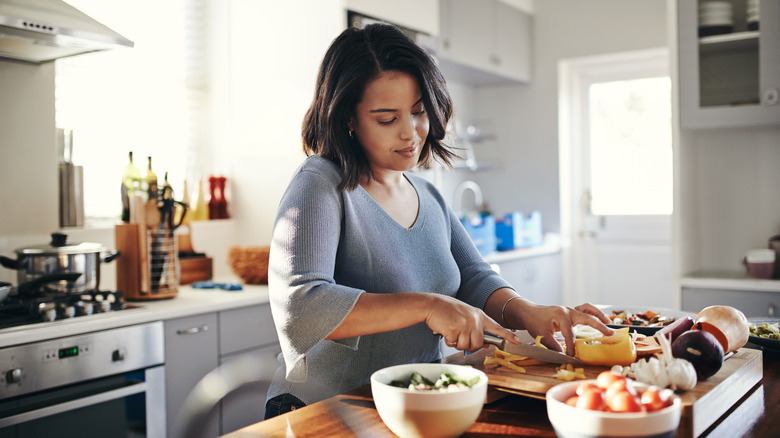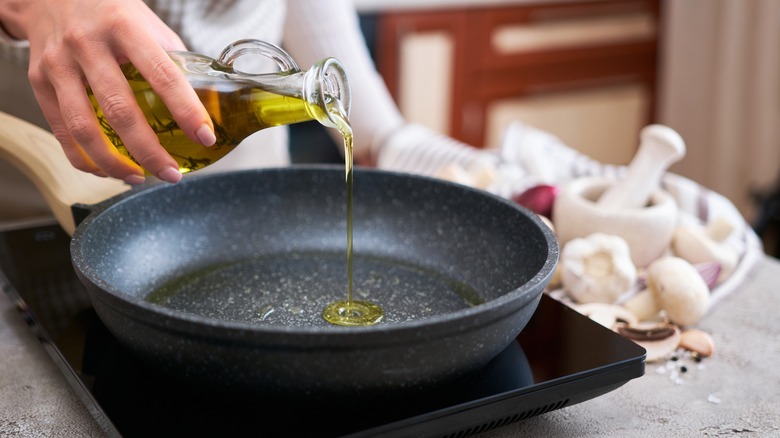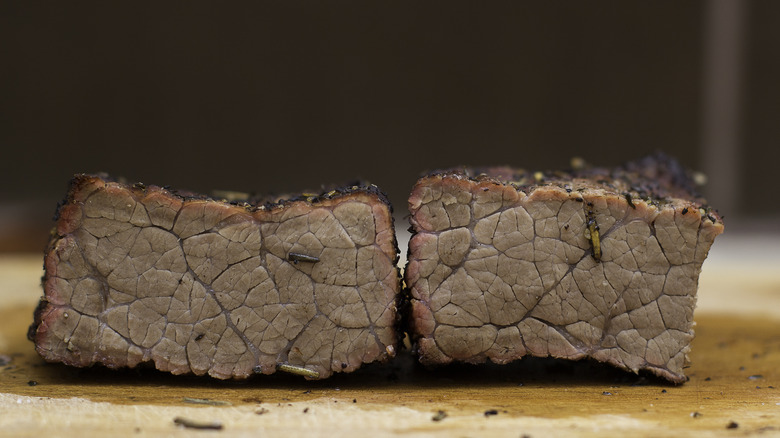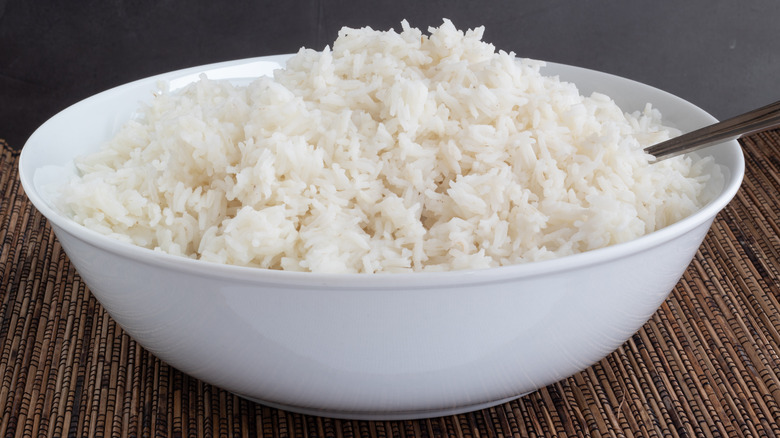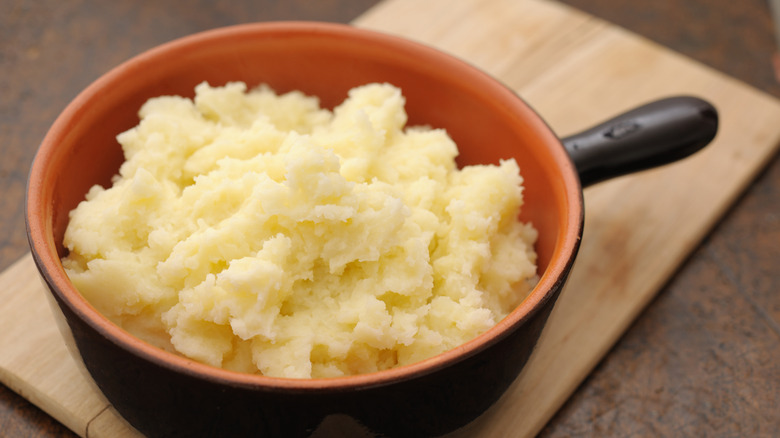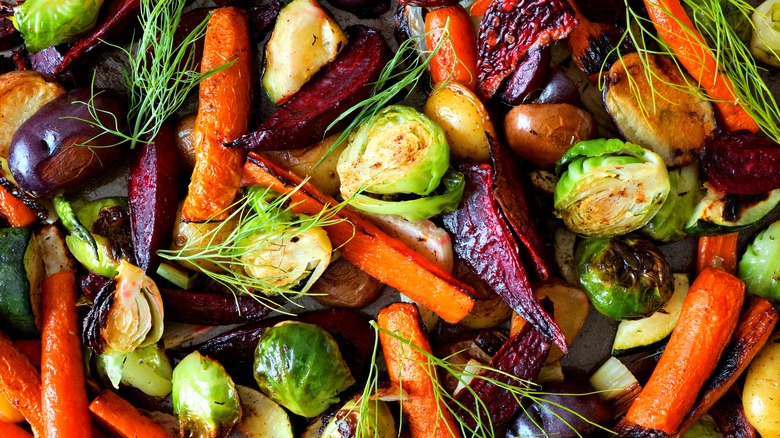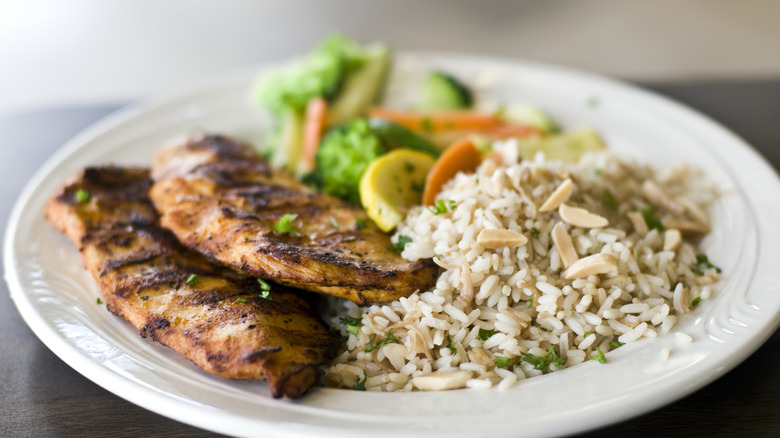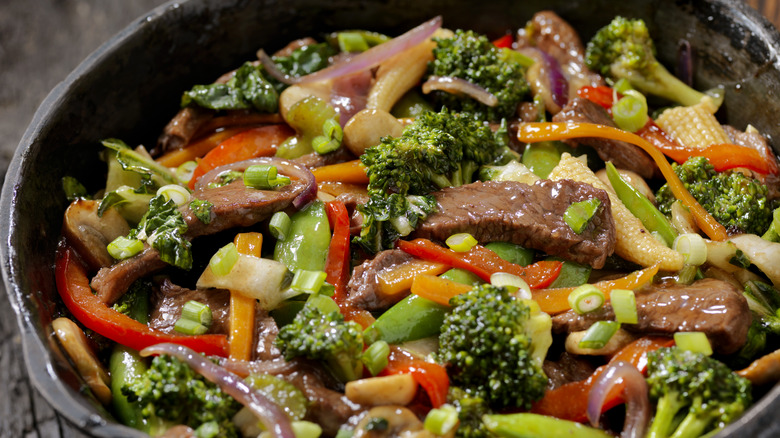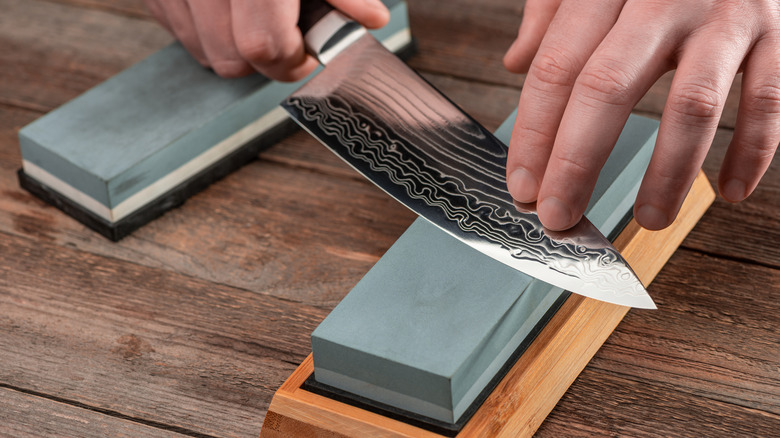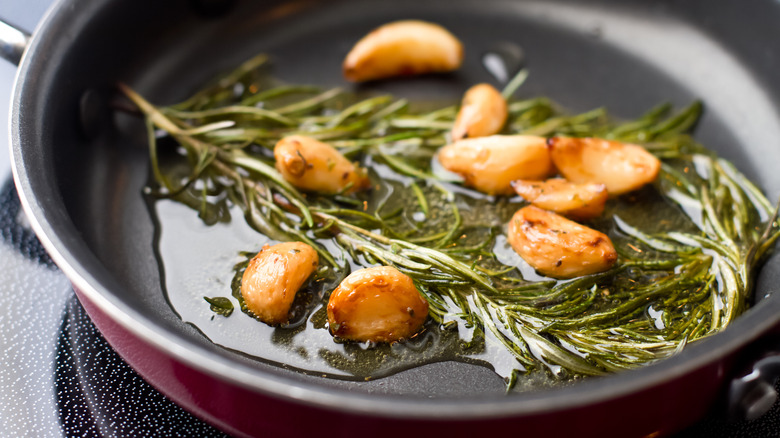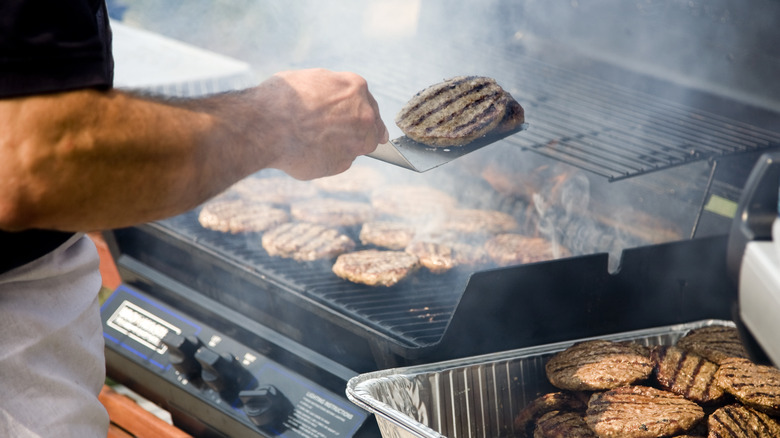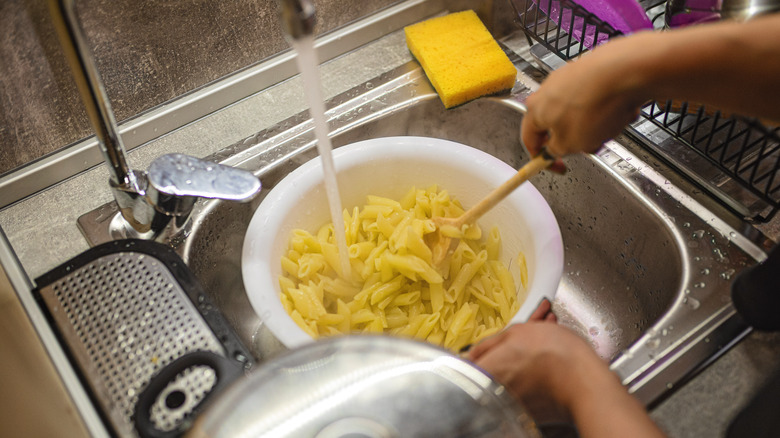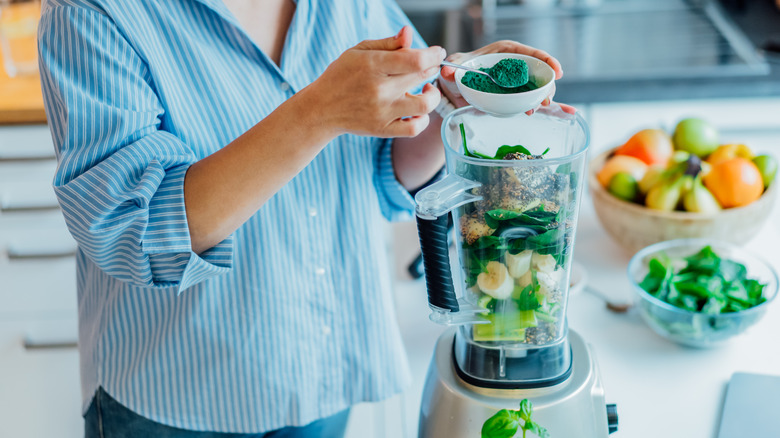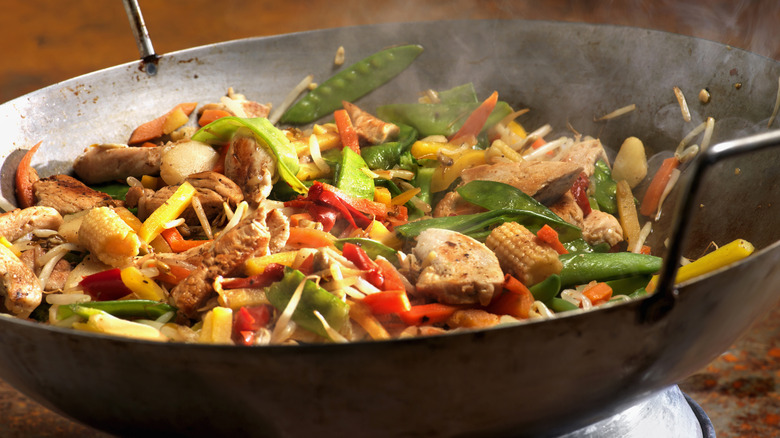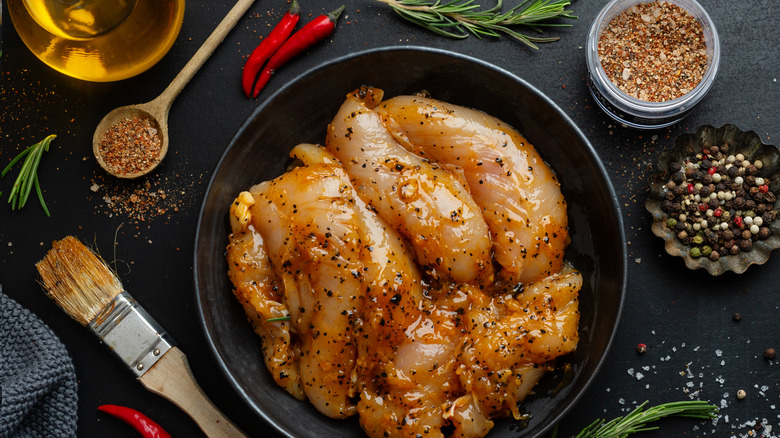15 Common Cooking Mistakes And How To Avoid Them
The beautiful thing about the art of cooking is that most of our knowledge is passed down orally through generations. Our go-to tips didn't come from TikTok or Buzzfeed but from our fathers, mothers, grandmothers, or great-grandmothers. And although times have changed, and we are learning more and more about the culinary arts every day, some tried-and-true methods are not worth messing with. However, some not-so-great tips have snuck their way into the chain of communication, or even worse, we've decided to stray from grandma's advice and do things our own way. This often results in cooking mistakes that you can get away with but will certainly compromise your creations. Let's nip this in the bud and address the most common cooking mistakes and how to avoid them.
Even if you're a seasoned home cook, it's quite possible that at least a few mistakes have slipped through the cracks. This can happen out of convenience when taking shortcuts, when misinformation has been passed along, or simply in the absence of knowledge. And while cooking is an art full of wiggle room and creativity, there are several practices that can't be debated. There isn't always a right and a wrong way to do things when it comes to the culinary arts, so when there is, you know there's a good reason behind it. It's time you up your game, put on that chef hat, and avoid those common mistakes like an absolute culinary pro.
Not pre-heating your stovetop pan
As you know, it's essential to preheat your oven when baking. This is especially important when roasting anything at a high temperature or making baked goods, which can be finicky. If not executed, you may produce rubbery, dry vegetables, meats, or baked goods. Well, the same goes for stovetop pans. In fact, there are several reasons why you should be preheating your pan before adding any ingredients. In addition, there's a reason that recipes will tell you to preheat your cooking oil.
If you're cooking meat or vegetables and are hoping to get that sizzling browned and caramelized crispy texture, then preheating your pan is essential. This will help to sear the ingredient while the inside will cook at a slower pace. In addition, some pans, like cast iron and stainless steel cookware, don't inherently have a non-stick surface. By heating the pan and the oil, you're creating a seal to prevent sticking. The protein, vegetable, or whatever product is being cooked will begin to cook instantly against the hot oil and won't have a chance to bond with the pan. This technique doesn't only result in better-textured food but also will reduce your kitchen clean-up time. However, some ingredients that are liable to burn like garlic, nuts, seeds, and butter don't need to be added to a pre-heated pan.
Overcooking vegetables and meat
There's a reason that people tend to shy away from eating their vegetables, and it may be because they are rarely cooked properly. In fact, many common cooking mistakes revolve around fresh produce, and one of the biggest hiccups of all is quite often overcooking. Vegetables should have a mild crunch to them but be tender enough to easily chew. Keep a closer eye on your veggies, and remove them from heat when their color begins to intensify. Taste test along the way to ensure they are cooked through. When in doubt, the best cooking methods for tender crips vegetables include blanching and steaming. If you're nervous about them becoming too tender even after they're removed from heat, feel free to plunge them into an ice water bath.
The same goes for meat! Nobody likes a dry, rubbery, chewy cut of chicken, pork, or steak. However, undercooking could be hazardous to your health. Especially cuts of meat with very little fat, like white poultry meat or sirloin steak should never be overcooked, because they can dry out in a matter of minutes. Use a meat thermometer to ensure your cuts have come to temperature, and keep yourself in the loop with current USDA recommendations for minimum meat temperatures.
Under-spicing
Americans and the English have reputations for under-spicing our cuisine. While other cultures tend to fill their kitchen with intense aromas, colorful seasonings, and punchy flavors, a bulk of us have stuck to salt and pepper as our go-to's. And while salt and pepper can make quite a difference, we believe that there is so much room for herbs and spices to make a difference that we should give them the chance they deserve. If your spice cabinet is filled with a pre-stocked set of spices that are likely expired, it's time to broaden your horizons and add a little spice to your life.
The best way to choose a seasoning is to let a professional guide you by following a recipe. Read up on all the tips you need when cooking with spices so you're not starting from scratch. If you're ready to venture out on your own, try using spice blends. Sprinkle your black beans with a Mexican spice mix or your shepherd's pie meat with a 12-herb blend. Give your spice a whiff or a taste before adding it, or add it to just a small section of the dish before committing.
Forgetting to garnish
Just like spices are often overlooked, so are herbs. And while it's easy to throw a simple dish together and forget about the aesthetic appeal, that last little bit of effort can make your food go from boring to gourmet. Just a simple garnish can make a difference both in appearance, and flavor, so it's important to consider using fresh springs of flavorful plants to help your dish sing.
It's important to understand some common types of herbs and how to use them before sprinkling on any old garnish. Some are mild and sweet, while others pack a punch of pungent flavor. A good rule of thumb is to use the internet to search for which type of herb goes best with the cuisine type you're making. For instance, if focusing on Mediterranean cuisine, you might use basil, oregano, or parsley. If you are creating a Thai curry you might give opt for native herbs like lemongrass, Thai basil, or cilantro a try. Mince the herb up into the dish, and leave a few whole springs to adorn the top.
Not varying texture
There's nothing worse than working all day in the kitchen to create a beautiful and flavorful meal, but it comes out monotonous in the texture department. Yes, you can focus heavily on using opposite complementing flavors like hot honey or mixing it up in the ingredients department with meats and vegetables, but if everything has a similar mouthfeel, then the dish will ultimately read as boring. There are so many textures to choose from: Chewy, crispy, crunchy, mushy, tender, silky, creamy ... the list goes on and on.
If you find that your dish has come out entirely mushy, it's not too late to save the day. There are plenty of crunchy additions that typically get added to salads that could garnish the top of any recipe. Consider using nuts, seeds, raw veggies, toasted breadcrumbs, or crispy meat to help add variety. Even just a little sprinkle can go a long way. Conversely, a dollop of tahini or a side bowl of tzatziki can smooth out a dish that is brittle and crackling.
Failing to branch out with ingredients
It's so easy to fall into a pattern of monotony when it comes to stocking your refrigerator. And if you're a cook-from-scratch kind of home chef, you may find yourself falling into a rut. If your shopping list looks just about the same each visit and doesn't vary greatly depending on the season, then it's time to rethink how you pick and choose ingredients. Look up recipes that feature local, in-season produce. Buy a recipe book that focuses on food from other cultures with cuisines that you enjoy eating out. Ask your friends what their go-to recipes are, and let them teach you the ropes.
Test your limits and grab some fruits that are uncommon in the United States to at least try once in your life for your morning smoothie. Grab a leafy green for your stir fry, even if you can't pronounce its name. Toss that weird-looking squash in your cart, as it may become a new favorite. Ask questions and use the internet as a resource. You might just discover a whole new style of cooking.
Overpacking your pans
If you're often cooking for a large crowd, or plan on making several portions of leftovers for yourself, then you've likely run into the issue of overcrowded pans in the past. It's nice to get the cooking done all at once, but sometimes it's worth it to break it up and take your time. It can make a huge difference in the outcome of your dish, and can even make the cooking process go more smoothly.
At a basic level, consider how an overcrowded wok could ruin your stir fry. The pan should be sizzling hot, and if veggies and meat are tripping over each other to come in contact with the hot surface then they aren't going to cook evenly. In addition, the liquid they produce will turn the pan into a steam machine instead of a dry sizzling one. Overcrowding pans can ruin cuts of meat as well. It lowers the temperature of the pan, which means you will lose that nice seared outside.
Using dull knives
Do you know that feeling when you use a brand new knife, and it severs your fruit, vegetable, or meat with absolute precision? It can make you feel like a pro. Well, that should be an ongoing feeling throughout the life of that knife. However, this requires proper maintenance, which can ensure both easy cutting and your safety. Even though the blade is less aggressive, cutting with dull knives is actually more dangerous than sharp ones.
There's a lot you need to know about keeping your knives sharp. Firstly, you'll need to purchase the proper knife sharpening tools, and you'll have a few options to choose from, from sharpening whetstones, to handheld knife sharpeners. In addition, you may want to consider investing in a knife guard to keep both yourself and the knives protected when they aren't being used. The right cutting board can help to keep your knives in tip-top shape as well. The softer the cutting board, the less damage it will have on those blades. Happy chopping!
Overcooking garlic
Garlic is one of those ingredients that most of the world can't live without. If a recipe calls for a clove, we all know they secretly mean six. We can't get enough of it because not only is it packed with flavor, but just a few seconds on the stovetop can make your whole home smell incredible. However, when it comes to cooking the aromatic, most people are making the same common cooking mistake, which is very avoidable.
Overcooked garlic has an unpleasant flavor, it loses its luster, and can even ruin a dish. In fact, it only really takes garlic about 30 seconds, or until it becomes fragrant to fully cook. It should never turn golden, or become stiff or chewy. This is why it's wise to never step away from cooking garlic and to give it your undivided attention. You may have to add it to your pan at the last minute, and that's okay.
Being impatient
If you can't help but watch a pot of water until it begins boiling, then it's likely you practice this common cooking mistake. Poking and prodding your food isn't a good thing unless the recipe calls for consistent agitation or stirring. Let your meat and vegetables brown before flipping them. Let whatever your cooking take its time. Don't fidget with burgers, pancakes, or soft vegetables. Flipping burgers too often can actually ruin them. Don't over-stir grains as they may become mushy. Leave that fish alone it or will become tough or break apart. Just set your cooking utensil down, take a step back, and try to let your pan, pot, or grill do the work.
This goes for checking the oven as well. Each time you open that oven, it drops in temperature. Consistency is key when it comes to baking, and altering the oven's internal temperature could throw off the whole recipe.
Using the same cutting boards for meat and produce
When cooking, safety is of the utmost importance. And for anyone that cooks with raw meat knows certain protocols must be followed consistently. After handling raw meat, you must wash your hands thoroughly with hot, soapy water, and the same goes for kitchen surfaces like countertops and sinks. In fact, some people even choose to clean down these surfaces with bleach or other chemicals to ensure that there won't be any cross-contamination that could cause a food-borne illness.
The USDA recommends using a different cutting board for raw meat than for produce because of the potential health hazards associated with the bacteria found in raw meat. In fact, they claim that certain bacteria found in poultry like salmonella can survive up to 32 hours on a kitchen surface. Designate a non-porous cutting board that is plastic or acrylic, and be sure that anyone cooking in the household understands the distinction. Wash it down with hot soap and water, or let it go through the dishwasher after use. Even then, it can still harbor bacteria, which is why any ready-to-eat produce should be cut on a separate surface.
Rinsing pasta to cool it down
If you grew up in a household with Italian friends or relatives, then you can fully understand what an offense it is to overcook pasta. To make the timing of it all easier, you may be tempted to rinse your hot pasta with cool water in order to stop the cooking. Well, that will have ancient Italians rolling over in their graves, too. When pasta comes out of the pot and into the strainer, you may notice that if you leave it there too long it will begin to stick together. And while it's tempting to rinse or oil it, this stickiness is what helps the sauce to cling to the noodles.
You want your pasta to remain nice and starchy, so when you go to add the sauce, it all sticks together instead of pooling in the bottom of your bowl. Hot pasta will also absorb some of the sauce which helps to integrate the dish even further. The only time you should be rinsing pasta is for pasta salad, with no other exceptions.
Failing to balance the flavor
Savory food should be savory, and sweet food should be sweet. However, there's a reason that your chocolate chip cookie recipe calls for salt, and your meat marinade calls for sugar. In order to create a balanced mouthfeel, most foods should have elements of sweet, salty, acid, and fat. Luckily, each of these categories of flavor has endless ingredients that can be used to create balance, so you won't need to pour olive oil into your smoothie or rub your salmon steak with sugar.
Fruit is often used to cover the sweet side of things, but you can also opt to kill two birds with one stone by including vinegar in your recipes. A little splash of balsamic in your soup or marinade carries both acidic and sweet undertones. Acid is usually the element missing from most recipes, so consider using citrus fruit, wine, or vinegar to elevate the flavor. Even just a small splash of these balancing flavors can make a huge difference, so don't feel like you need to add exuberant amounts of sugar to your dressing, or avocado to your smoothie. Always do a small taste test if you're unsure about an ingredient before adding it to an entire batch.
Including too many statement ingredients
After a big grocery haul, it may be tempting to use all of those top-tier ingredients at once. But believe us, your dish doesn't need chicken, shrimp, mushrooms, and pineapple. Choose a statement ingredient and use it as inspiration for anterior ingredients. Ever have had a pizza loaded to the brim so much that it was hard to make out any one flavor? Well, that applies to just about any recipe.
In fact, even in a stir fry the ideal amount of ingredients to include is between three and five. Any more just becomes overwhelming. If your protein is shrimp, then try to select complementary ingredients like mild, sweet vegetables, and fresh herbs. If you've opted for steak, choose a few robust vegetables to help bring out the meaty flavors. If you choose pork and want to include pineapple, then pineapple becomes your statement ingredient as it carries the most flavor. Take your time, choose with purpose, and don't overwhelm your palate.
Not marinating protein
Those who think tofu tastes bland need to be introduced to something called sauce. You wouldn't eat chicken without seasoning, so why tofu? And even if you would eat a plain, boiled chicken breast (no judgment) it's already infused with quite a bit of sodium, according to the CDC. Even just a little lemon juice, tamari, or a sprinkling of herbs and spices can bring it to a whole new level, and that goes for any kind of protein, plant or animal based.
It's absolutely crucial to season marinades, and to marinate your proteins. Meat especially benefits by not only being infused with flavor, but marinades often contain an acidic component like vinegar or citrus which can act as a tenderizer. Use a specific marinade recipe, or use your favorite vinaigrette salad dressing. Include oils, spices, herbs, and condiments galore. Let it sit in the sauce for at least thirty minutes before it comes in contact with heat, but opt for a longer soaking if you're not crunched for time.
